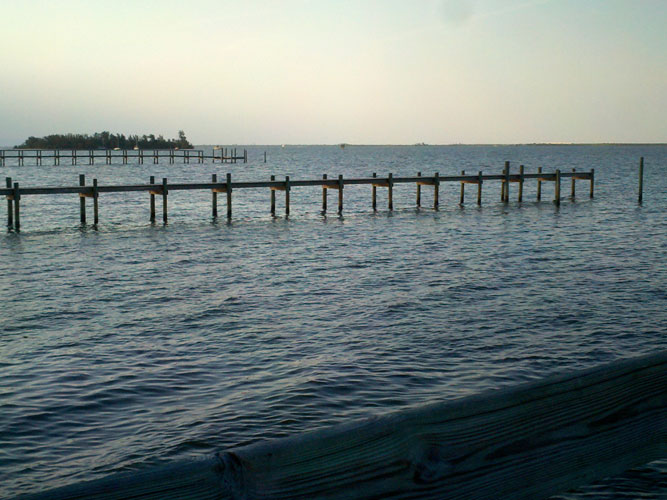
SEBASTIAN — The Sebastian Natural Resources Board is putting together a public education program for the city aimed at educating homeowners on the proper use of fertilizers and their impact on the Indian River Lagoon. Their discussion Tuesday evening centered on saving money, having a healthier lawn and preserving the lagoon – all in one step – by cutting out phosphorus.
Dave Botto, chair of the Marine Resources Council’s Fisheries Campaign, spoke before the board Tuesday, urging the members to tie the use of phosphorous and non-slow release nitrogen to the health of the Indian River Lagoon.
“The villains are nitrogen and phosphorous,” Botto said.
He said that every one pound of nutrients – phosphorous, nitrogen and others – in the lagoon accounts for 500 pounds of algae. That algae in turn clouds the water, keeping sunlight from penetrating to the seagrass beds below. The algae also consumes the dissolved oxygen in the water, killing off any other creatures – such as fish – that rely on the oxygen.
The point Botto wanted to make to the board is that residents do not need to use phosphorous and it’s best to use a slow-release nitrogen to ensure it stays where it belongs and doesn’t get washed away with the next rain.
Doing those two things, he said, would save people money, make their yards healthier, and cut down on the amount of nutrient run-off into the lagoon.
Yards that have been over-treated with phosphorous are susceptible to various pests, including dollarweed, chinch bugs and fungi.
The main source of pollution in the lagoon comes from residential lawn treatments, according to Botto, who explained that previous major offenders included sewage treatment plants along the lagoon.
With legislation from the early 1990s, sewage plants were no longer allowed to discharge effluent into the lagoon.
Botto said they had expected that to clear up the lagoon, but at the same time the sewage plants had to change their practices, Florida began to develop heavily, especially along the waterways.
So the problem of too much nutrients in the lagoon didn’t go away, it was just replaced, he said.
Another source of contaminants comes from agricultural properties – farms that use fertilizers and livestock, which produce waste. Botto told the Natural Resources Board that farms are being encouraged to voluntarily abide by Florida’s established best management practices pertaining to fertilizer and waste management.
That leaves yard fertilization as the main polluter, according to Botto.
“Can we solve it? Will it cost millions?” he rhetorically asked. “It’ll cost us nothing. It’s a no-cost solution.”
And it’s as simple as educating the public – and store clerks selling fertilizer – both the board and Botto agreed.
After the meeting, Botto said the Marine Resources Council has reached out to those in Indian River County government to not only pass an ordinance, which the City of Sebastian, City of Vero Beach and the Town of Indian River Shores have done, but to also create a public education program.
He said he doesn’t understand the County Commission’s reluctance to establish an ordinance – education is a no-cost solution with no down side.
“What the hell are we waiting for?” Botto asked.
As for the progress Sebastian is making on producing its own education program, Botto said the city’s on the right track.
“I’m encouraged that there is a strong effort here led by good people,” he said.



